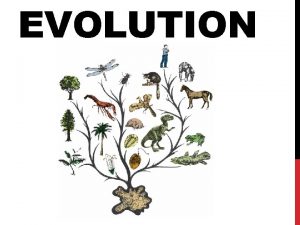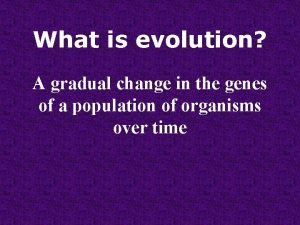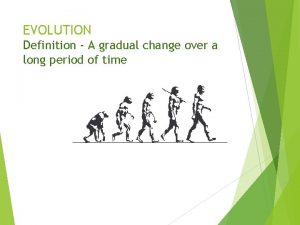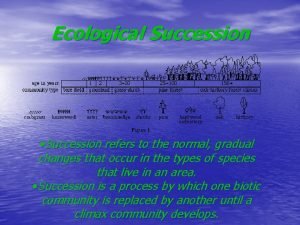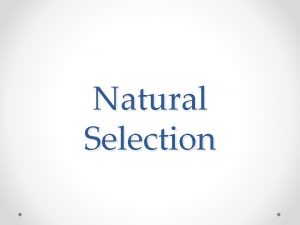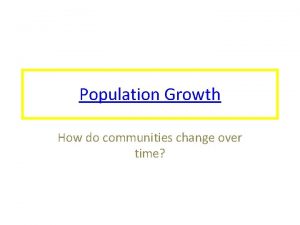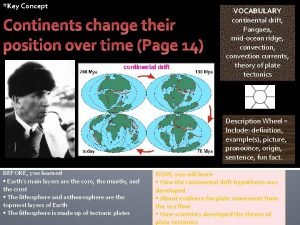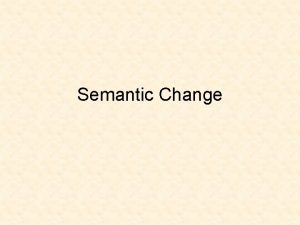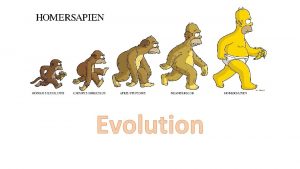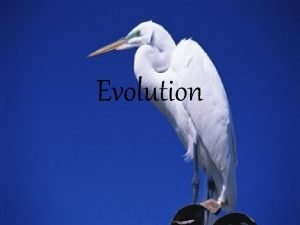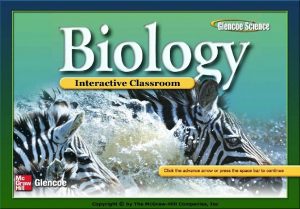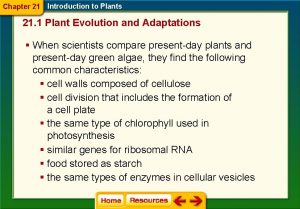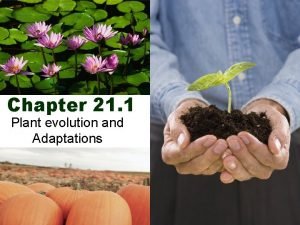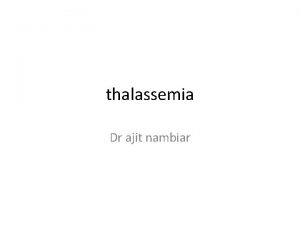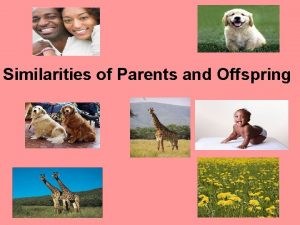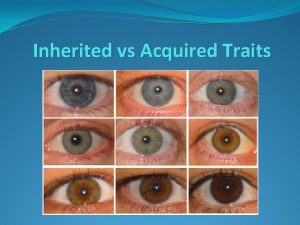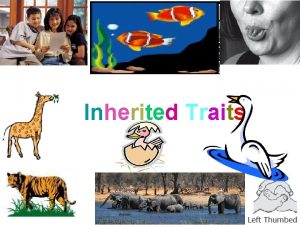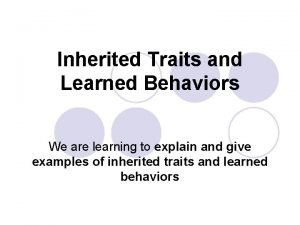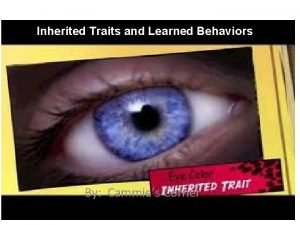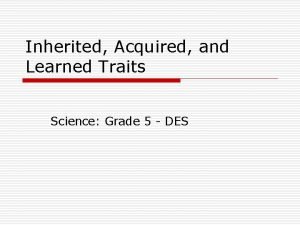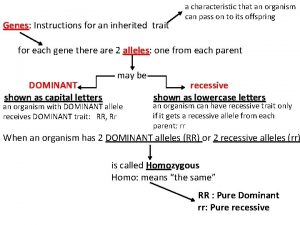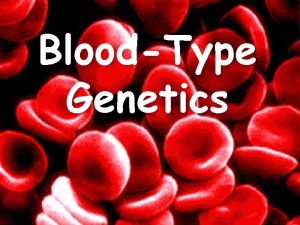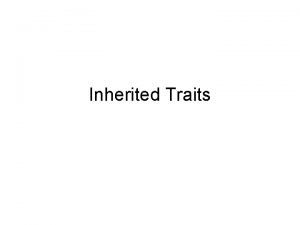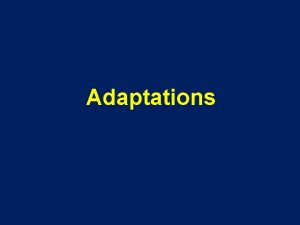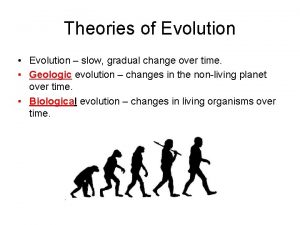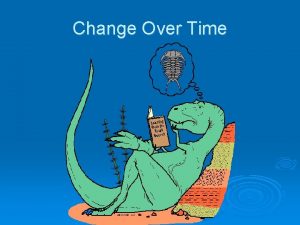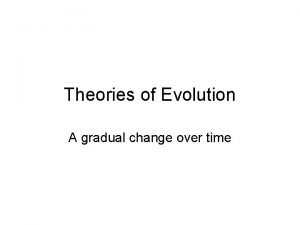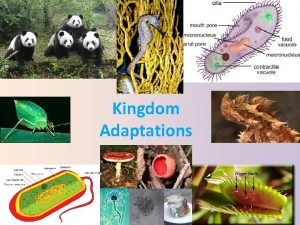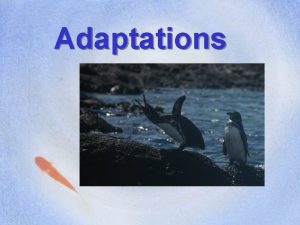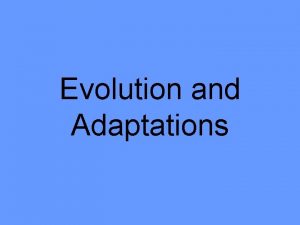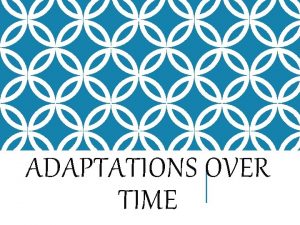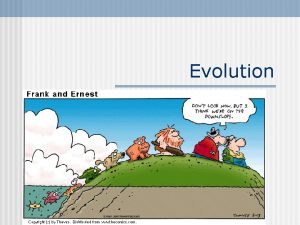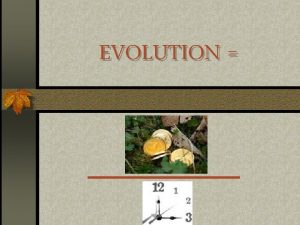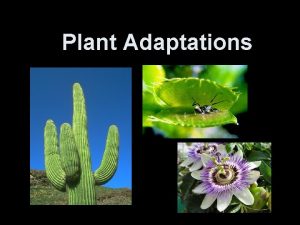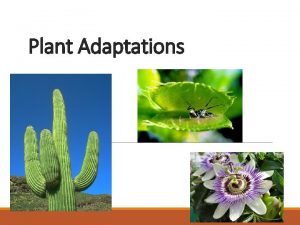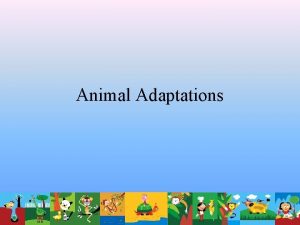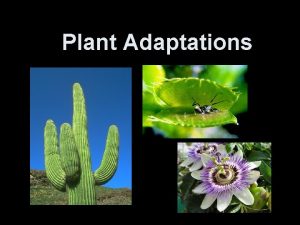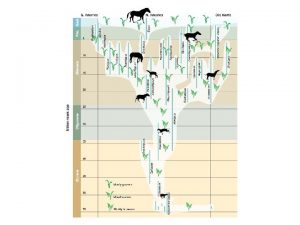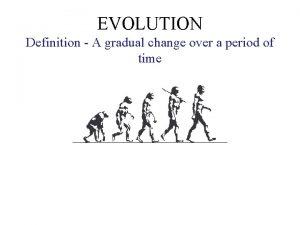Evolution Gradual change over time Adaptations are inherited





























- Slides: 29

Evolution= Gradual change over time

Adaptations are inherited traits that increase a group’s chance of survival & reproduction This type of finch has a thick beak adaptation for cracking open seeds

Variation Within a species, there is variation Variation = differences between members of a population Species = group that can breed & produce healthy offspring

The Scientists Jean Baptist Lamarck vs. Charles Darwin

Jean Baptiste Lamarck Evolution occurs as structures develop through use, or disappear because of disuse, and these “acquired characteristics” are passed to offspring. EXAMPLE: Over a giraffes lifetime it can stretch it’s neck and it’s offspring will be born with long necks…. Valid?

Darwin and The Monkey! THIS IS NOT WHAT HIS THEORY SAYS

Who was Charles Darwin l Studied l Hated medicine the sight of blood l Received a BA in Theology l Had 10 children l Darwin was a Naturalist on the HMS Beagle

Theory of Evolution l In The Galapagos Islands, Darwin collected species of finches (13) l Each had a specialized diet and beak structure l These finches all closely resembled a South American finch ancestral species l On the trip Darwin saw things he could only attribute to a process called: “Natural Selection”

Darwin’s Finches

Theory of Evolution Hypothesized that the differences were do to gradual change l Darwin referred to such change as “descent with modification” – evolution; l Wrote Origin of Species l He still wondered “How does evolution occur? ” l

After his voyage, Darwin made the following inferences: 1. 2. 3. 4. 5. There is variation within populations Some variations are favorable Not all young produced in each generation can survive Individuals that survive and reproduce are those with favorable variations Favorable traits will increase in future generations.

Darwin called this process by which populations change in response to their environment: Natural Selection


Evolution happens because of natural selection Selection acts on individuals, populations evolve

Change creates advantages for some species & disadvantages for others Fossils reveal changes in species over millions of years

Evidence for Evolution 1. l Fossils show change over time l l – scientists can date fossils & use them to support theory of evolution common ancestors reveal whether species are related Anatomy of living species also shows relatedness

How Anatomy supports Evolution 2. Homologous Structures l l Traits similar in different species because they share a common ancestor Ex: human arm, dog front limb, horse leg, whale fin These “ look the same. ” They have the same bones but different function.

How Anatomy supports Evolution 3. Analogous structures l Distantly related species have structures that have the same function but are different in structure l Ex: wing of butterfly & bird These “ work the same. ” They have different bones but the same function.

How Anatomy supports Evolution 4. Vestigial structures l l l Structures reduced in size & often unused Remains of functional structures inherited from an ancestor Ex: leg & hip bones in pythons & whales

How DNA Supports evolution 5. Molecular Evidence l Also called biochemical evidence l Compares biomolecules such as DNA or amino acid sequences between organisms l Related organisms have more of the same molecules in common

So…. . Where Do New Species Come From?

How do new species form? 1. Geographic Isolation l l When members of a population are separated Ex: polar, grizzly, & black bears

2. Reproductive Isolation l When members of a population can’t breed even though they live nearby l Ex: different mating seasons or different mating calls

Different Types of Evolution 1. 2. 3. 4. Divergent evolution Convergent evolution Coevolution Adaptive radiation

Divergent Evolution -Isolated populations evolve independently Ex: polar & grizzly bears changed independently due to different habitats

Convergent Evolution -Unrelated species become more alike because they live in similar environments Ex: shark & dolphin

Coevolution -Species that interact closely adapt to one another Ex: Flowers & Pollinators (Birds, Bees and Butterflies too)

Adaptive Radiation Evolution of many diverse species from one common ancestor Ex: famous Galapagos finches discovered by Darwin

Questions?
 The gradual change in a species over time
The gradual change in a species over time A gradual change in a community over time.
A gradual change in a community over time. Gradual change
Gradual change Antigentest åre
Antigentest åre The gradual development of a community over time
The gradual development of a community over time Natural selection definition
Natural selection definition When does a climax community change
When does a climax community change Natural selection definition biology
Natural selection definition biology How to write a change and continuity thesis
How to write a change and continuity thesis How do communities change over time
How do communities change over time Continents change position over time
Continents change position over time Semantic narrowing
Semantic narrowing The change in the hereditary features over time
The change in the hereditary features over time The process of change over time is
The process of change over time is Change in hereditary features over time
Change in hereditary features over time Why do classification systems change over time?
Why do classification systems change over time? Chapter 21 section 1 plant evolution and adaptations
Chapter 21 section 1 plant evolution and adaptations Anthocerophytes
Anthocerophytes Coniferophyta
Coniferophyta How is thalassemia inherited
How is thalassemia inherited Similarities of offspring to parents
Similarities of offspring to parents Dog inherited traits examples
Dog inherited traits examples What is a inherited trait
What is a inherited trait Inherited behaviors examples
Inherited behaviors examples Bill nye inherited traits and learned behaviors
Bill nye inherited traits and learned behaviors Acquired traits
Acquired traits Homocigoto dominante
Homocigoto dominante B+ blood type ethnicity
B+ blood type ethnicity An unchanging, biologically inherited behavior pattern.
An unchanging, biologically inherited behavior pattern. What inherited traits do elephants have
What inherited traits do elephants have
